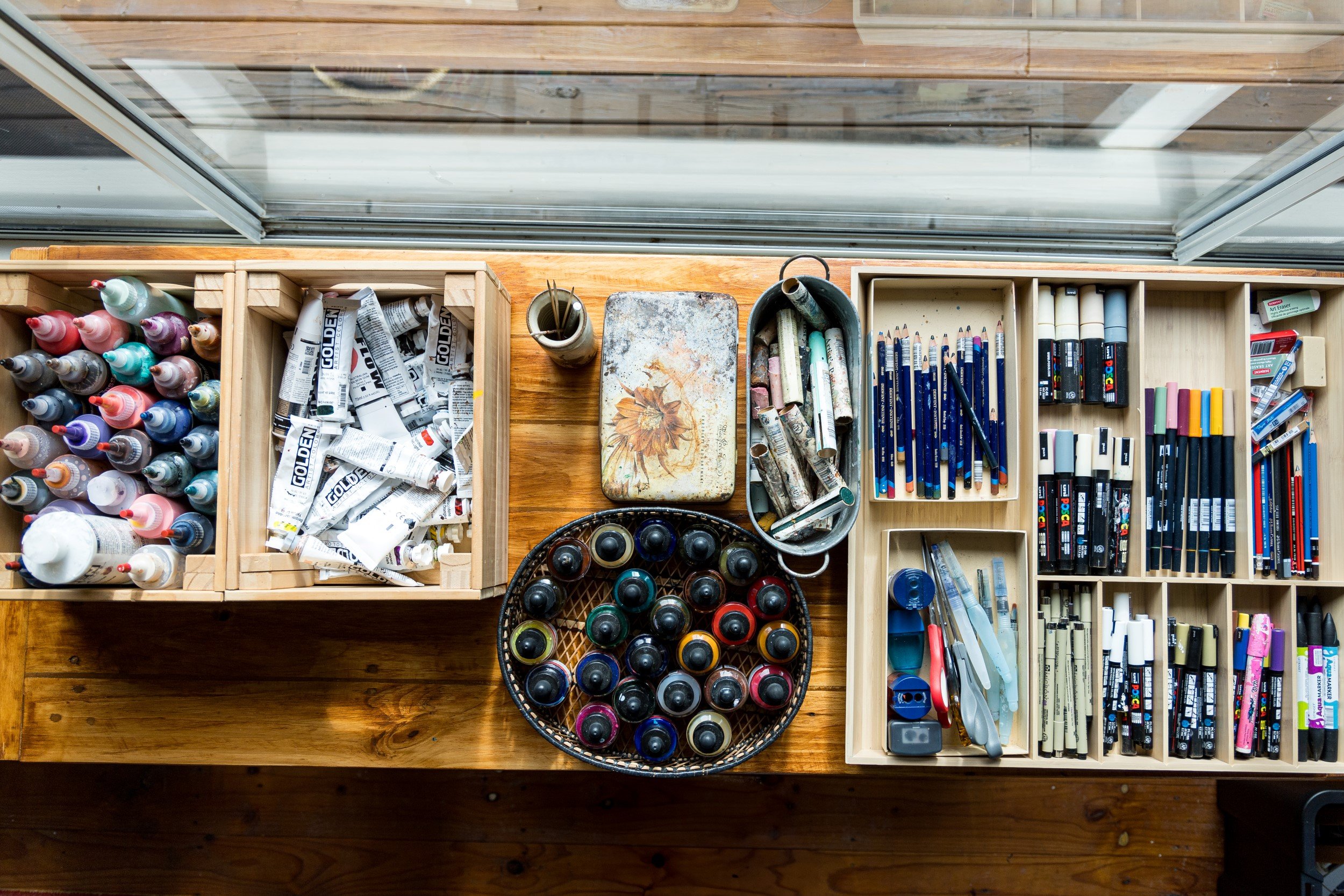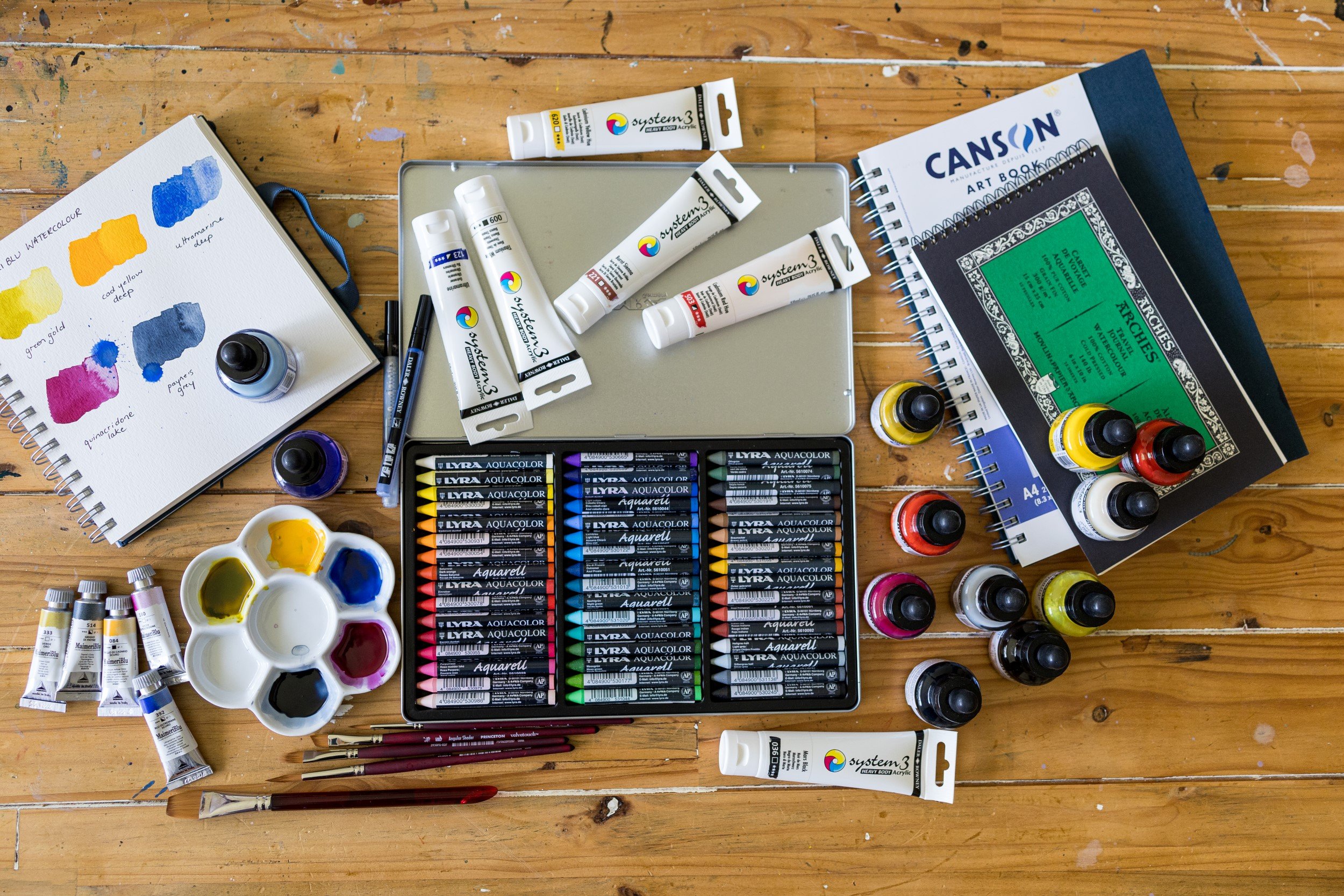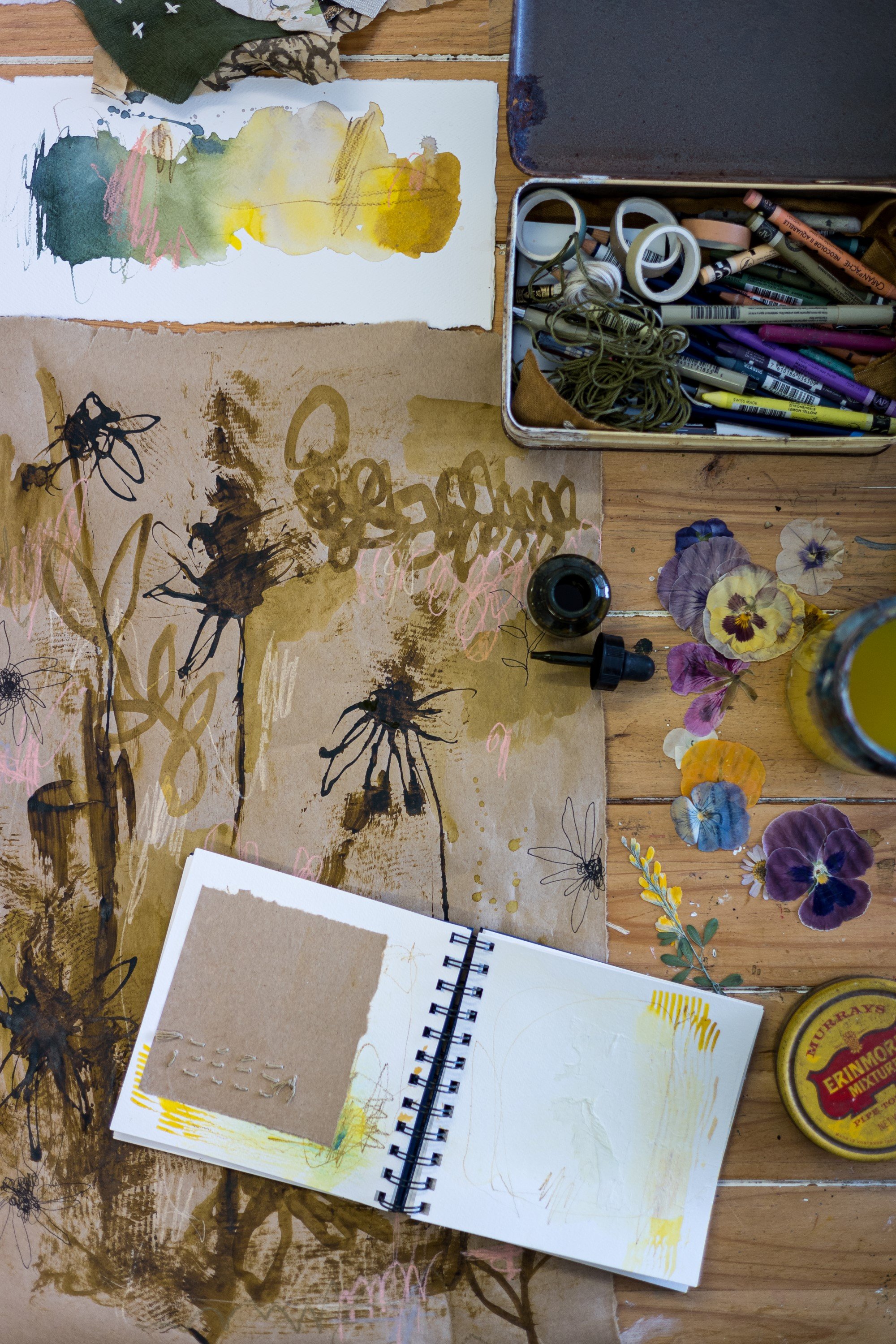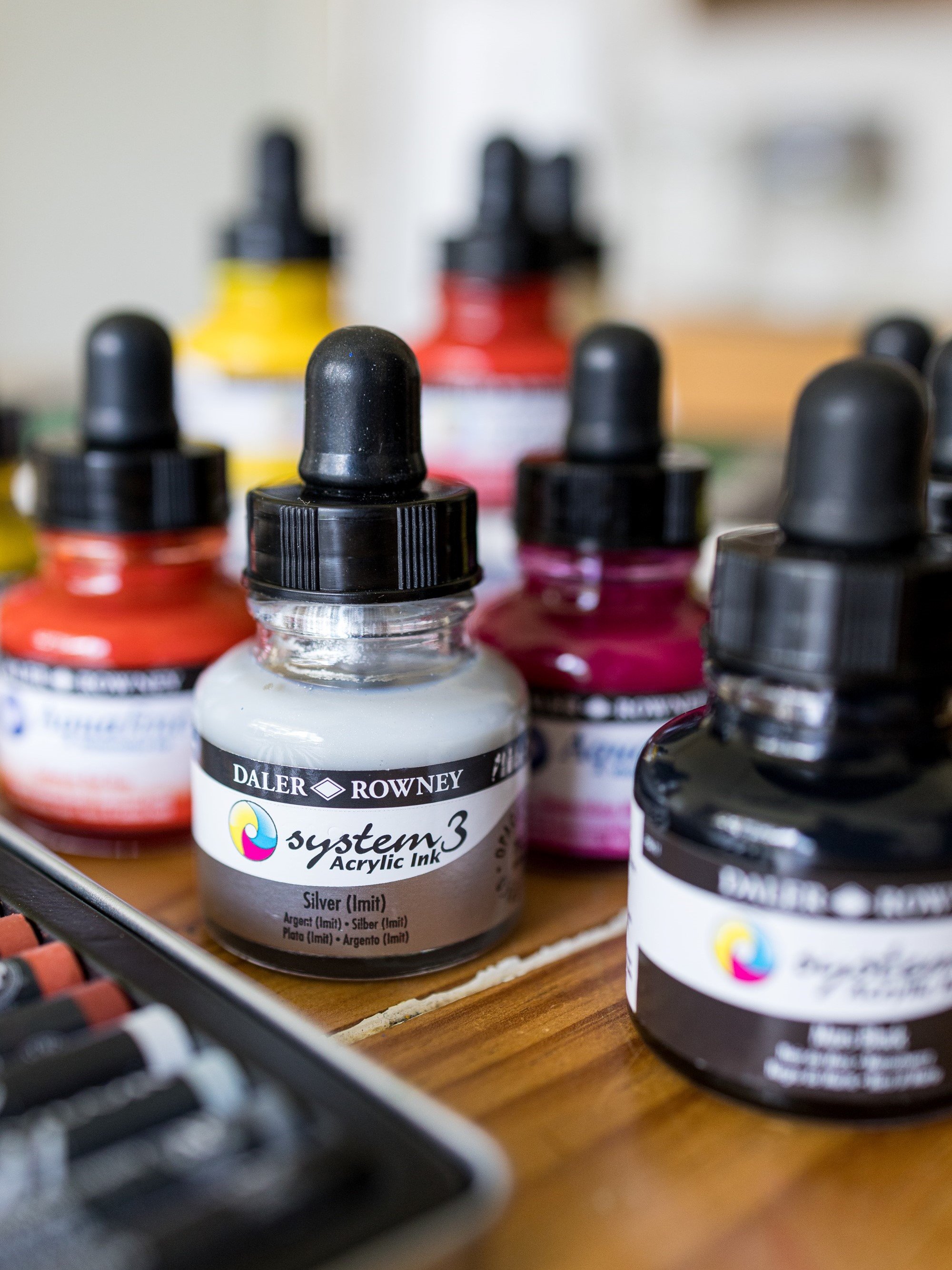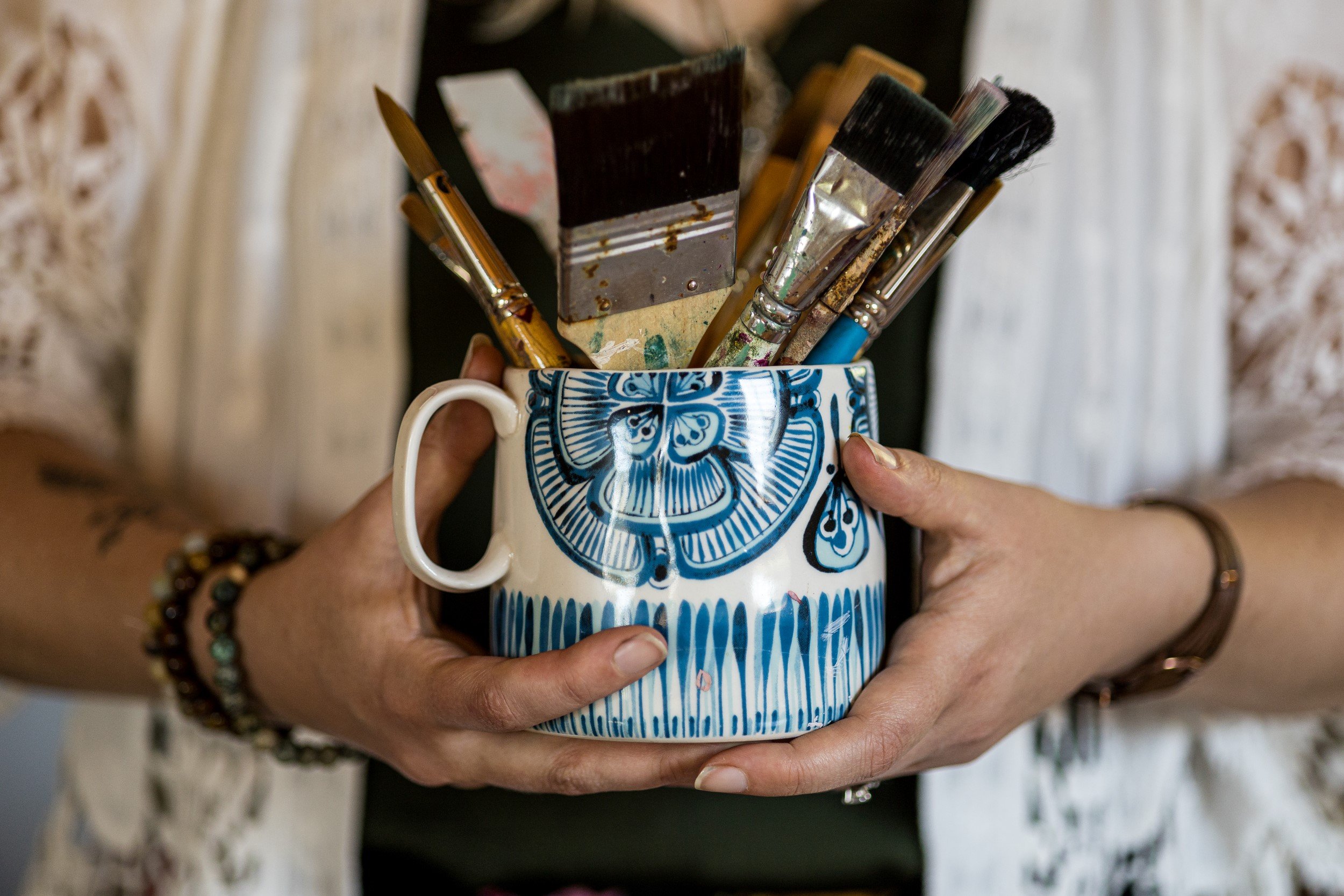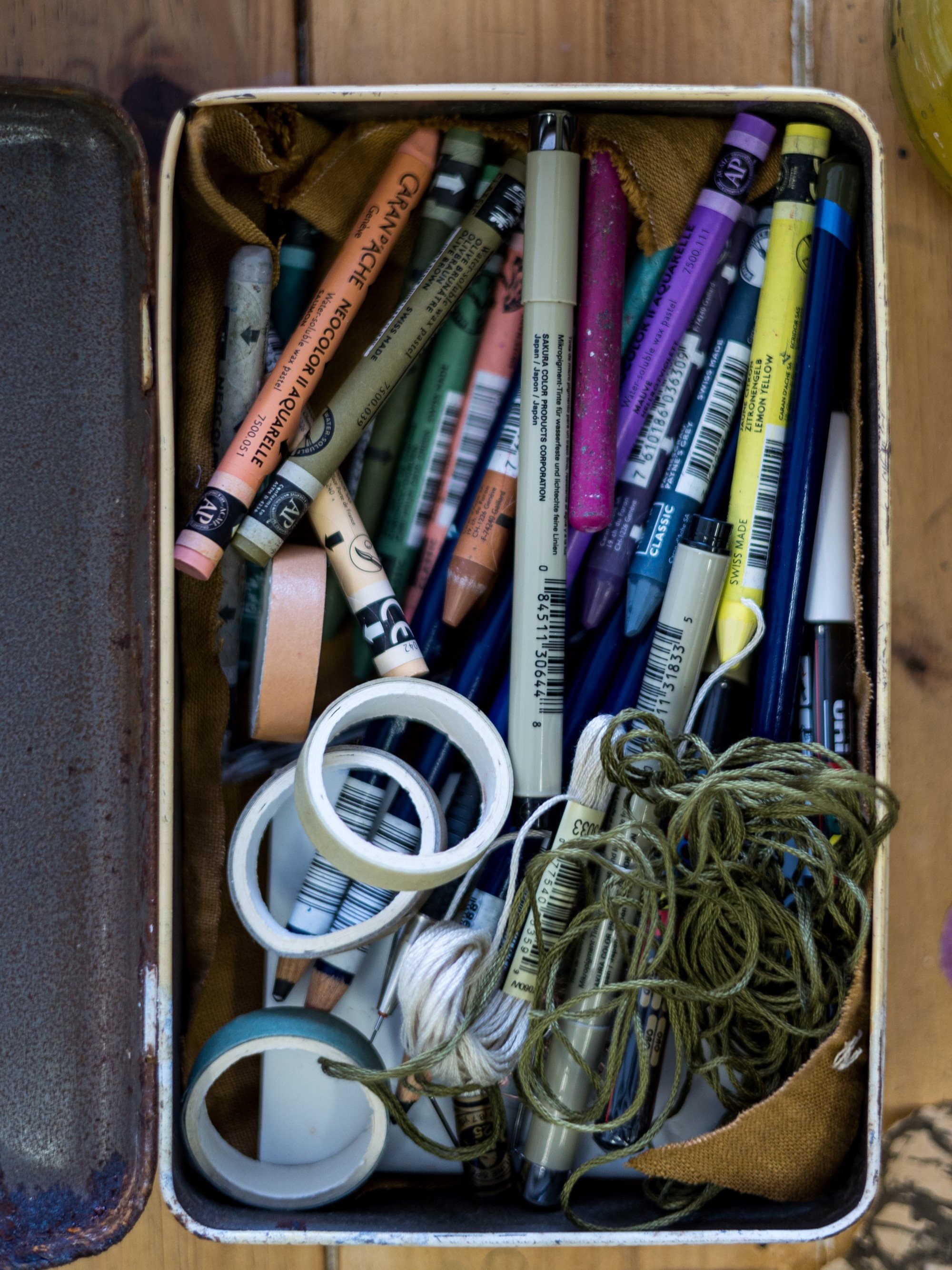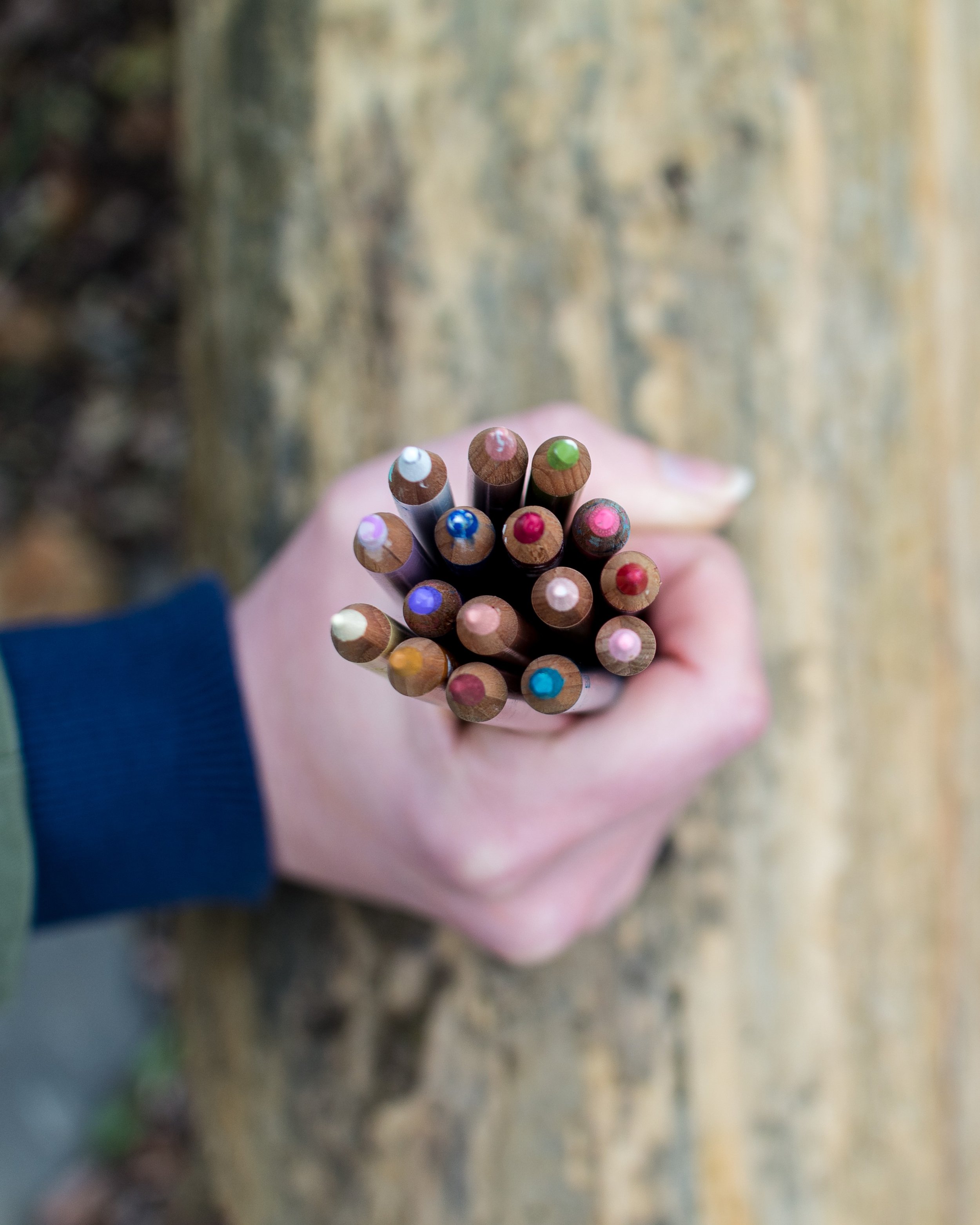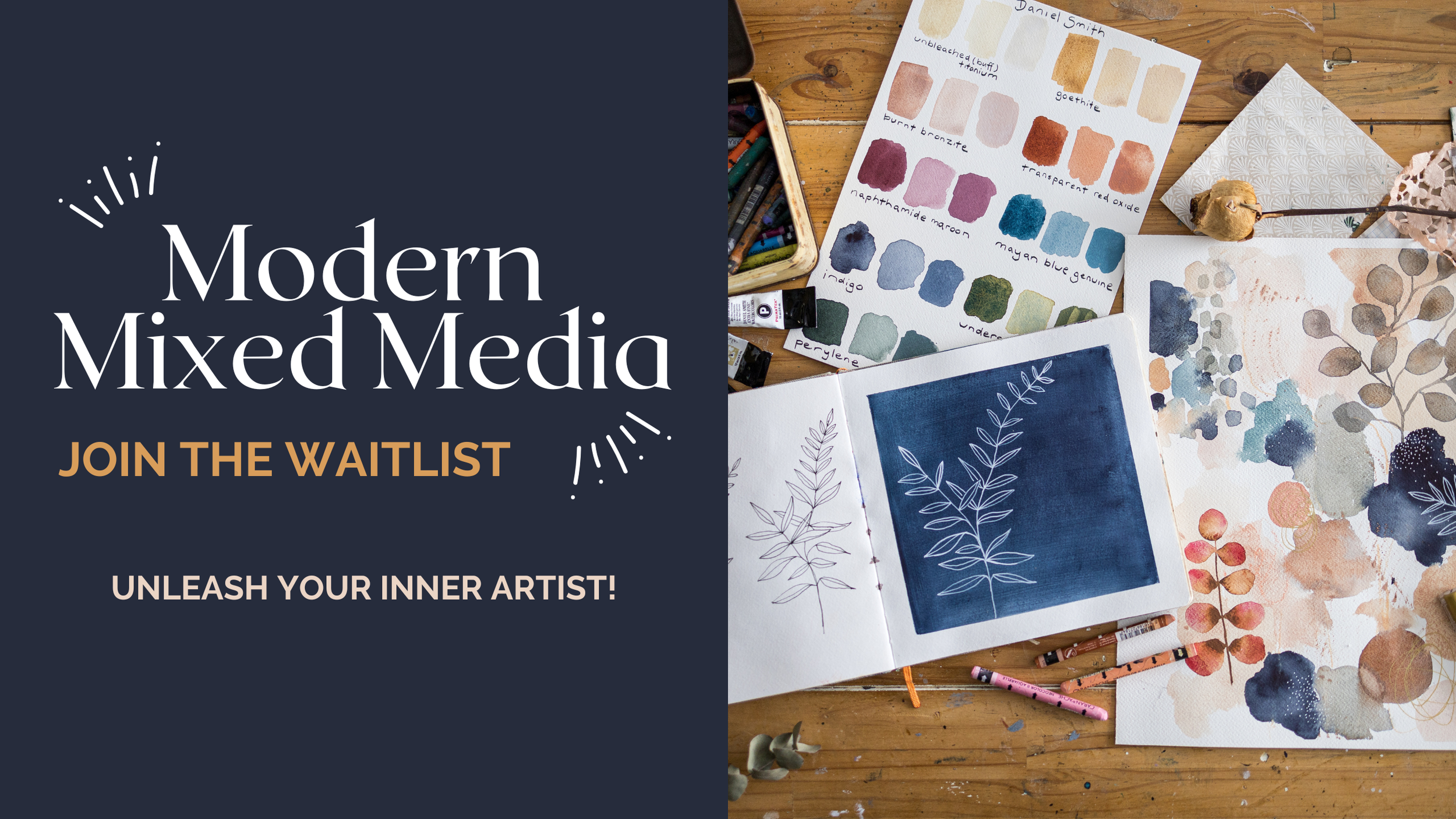Building a Mixed Media Art Kit: Favourite Supplies for Getting Started!
Embarking on the path of mixed-media art can initially feel overwhelming and daunting. There are so many supplies out there, and it's essential to make informed choices to get the most out of your budget.
Today, I'm here to guide you on this creative journey, helping you assemble a simple yet versatile art kit. With just a few supplies, you will be amazed at what you can create!
I’ve extensively used all the supplies mentioned in this post, and they've truly enhanced my enjoyment of the art-making process. They've helped me understand the benefits that certain products can bring to your end result. I'm not suggesting that good art supplies guarantee good art, but knowledge about your materials is certainly a key ingredient in the creative mix!
With that in mind, let’s dive in!
Note: This post contains affiliate links, which means I may receive a small commission, at no cost to you, if you make a purchase through a link!
With so many gorgeous art supplies available, it can be hard to choose! Let’s break it down and look at the basics that you might need to get started.
The Canvas: Paper
Every painting needs a canvas, and for many artists, paper is the go-to choice due to its affordability, ease of storage, and suitability for practice. Watercolor paper is specifically designed for wet media, making it an ideal surface for mixed media where different types of paints and techniques may be used.
When it comes to selecting watercolor paper, understanding the distinction between student and artist-grade paper is crucial.
Student-grade paper: For those on a budget, student-grade paper like the reliable Canson Montval provides a great option. It offers affordability while still delivering good quality, making it an ideal surface for practicing various techniques.
Artist-grade paper: Premium papers such as the ever-popular Arches offer exceptional quality. Although it comes with a higher price tag, it's crafted from 100% cotton, resulting in vibrant colors that stand out. What truly sets it apart is its extended wet working time, which provides artists with added flexibility to explore their creative ideas. With this paper, you can comfortably use a wider range of wet media and effortlessly build layers in your artwork. Many artists use artist-grade paper for pieces they intend to hang or sell.
Ultimately, the choice between student and artist-grade paper will depend on your personal preferences and budget. Both options offer immense potential for exploring mixed media, but it's essential to recognise that the choice of paper will impact your final results.
Student-grade supplies can help you get started without breaking the bank. It’s important, though, to know what you're getting and how it will impact your art.
Adding Color: Watercolour Paint
Watercolour is an excellent paint to get started with, as it doesn’t take up much space and is easy to clean up. It will always hold a special spot in my heart, as it is the medium that “unlocked” my creativity and enabled me to make art during a busy season of my life. When it comes to choosing watercolour, there are quite a few things to consider.
Tube vs. Pan Watercolours: The choice between tube or pan watercolours often boils down to personal preference and painting style. Tube watercolors are moist and concentrated, allowing for vibrant, intense colour mixing. They are great for artists who enjoy working expressively with bold colours and larger brushstrokes.
On the other hand, pan watercolors are dry and portable, making them perfect for on-the-go artists. They provide convenience and are ready to use at any time. While they may not be as intense as tube watercolors, they excel in versatility and ease of use, making them an excellent choice for both beginners and experienced artists seeking a compact and mess-free option.
Let’s take a look at two options that I have used in my own art practice:
Artist Grade Option: I absolutely love Daniel Smith watercolour paints as they are heavily pigmented, so a little goes a long way. To begin with, I would suggest something like the Daniel Smith Essentials Set, which includes primary colours for maximum mixing potential. Then, if you fall in love with them (which there is a good chance you will), you can begin to explore the many specialty paints that Daniel Smith offers, including metallic finishes, extreme granulation, and unique split-color options like 'Cascade Green'. It’s one of the reasons that I enjoy the brand so much—there are so many unique textures, shimmering effects, and gorgeous colour combinations to explore.
Student Grade Option: While you can’t beat the pigmentation and interesting effects of artist grade paints, there are some wonderful student-grade options. The Van Gogh Pocket Box is a budget-friendly choice with 12 half-pans. Compact and portable, it easily slips into your pocket or bag. This set comes with a built-in mixing palette and a brush, offering everything you need in one compact package for on-the-go creativity.
Daniel Smith watercolour paints are on the pricier end of the spectrum, but a little goes a long way, and they come in a wide range of colours and speciality finishes.
Expressive Details: Acrylic Ink
Acrylic ink is another valuable addition to your mixed-media toolkit. Its smooth and bold application makes it excellent for sketching, fine detailing, and infusing vibrant color into your mixed-media projects. Unlike traditional acrylic paint, acrylic ink's fluid and free-flowing nature enables unpredictable and expressive effects, adding an exciting dimension to your artwork.
The unpredictable nature of acrylic ink makes it wonderful for loose sketching and expressive marks.
Brushes: Your Artistic Tools
You can save some money when it comes to brushes, especially if you're just starting. Princeton Real Value sets are excellent for beginners. This set includes useful brush sizes such as a round size 4 and 8, and a 1/2 and 1 inch flat wash brush.
It’s also handy to have a mop brush or larger round brush for painting backgrounds and achieving soft and fluid shapes in your artwork. One of my go-tos is the Princeton Select mop brush in the 1 inch or ¾ inch size.
As you progress with your watercolour painting, you can look into investing in premium brushes like Princeton Neptune or Princeton Velvet Touch. These brushes are specifically designed to hold more water and paint, allowing artists to paint for longer without constantly reloading, allowing for smoother and more continuous strokes. The bristles also strike a balance between stiffness and flexibility, making it easier to achieve intricate details in your mixed media art. While they may come at a higher price point, the performance and longevity of premium brushes make them a worthwhile upgrade for artists looking to elevate their creative work.
You can get started with just a few brushes and gradually add more to your collection. Many brands offer starter brush sets with popular brush shapes and sizes in them.
Making Your Mark: Mark-Making Supplies
This is where mixed media truly shines—with mark-making supplies!
Caran d’Ache Neocolor II Pastels: These water-soluble crayons are incredibly versatile. Whether used dry for bold marks or with added water to transform into watercolor paint, they offer endless creative possibilities. The colours are vibrant and the pigment easily combines with water to create paint effects.
Posca Paint Pens: These acrylic-based pens are perfect for adding intricate details to your watercolor or acrylic work. While my favorites are black, white, and gold, they also come in a delightful array of colors, sizes, and nib styles.
Derwent Inktense Pencils: These water-soluble pencils create bold marks that transform into ink when water is applied, providing even more versatility and artistic potential.
Note: You don’t necessarily need to have both water-soluble pencils and pastels. If you are on a budget, you could start with one format. Pencils work well for fine details, while pastels make it easier to get more coverage and make bigger marks.
Remember, you can test these products individually before committing to a full set. Pay a visit to your local art store, try out a few colors, and discover what resonates with your unique creative style. In many art stores, you can purchase products individually, allowing you to curate a small, affordable kit rather than needing to buy large sets that can quickly add up.
And don’t forget what you already have at home. You might be surprised to find pens, pencils, pastels, markers, charcoal, collage papers, and other interesting items that can be incorporated into your art, adding fabulous effects to your creations.
Creating a small, portable art kit with your favourite supplies is a great way to encourage more creative moments in your day-to-day life.
Embrace Experimentation
In mixed media, experimentation is the key to unlocking your artistic potential. There are no mistakes in art—only opportunities to explore and create something new and unique. Feel free to combine acrylic ink with watercolor or venture into other unexpected combinations. Let your imagination run wild!
A juicy scene from my 6-week online course, “Modern Mixed Media” where experimentation is key!
Join Me in the Creative Journey
To put these exciting ideas into practice, my Modern Mixed Media course will be reopening for registration on September 28th. In this course, I'll guide you through using these fantastic supplies to create beautiful abstracts, botanical paintings, and more!
If you'd like to join the waitlist, click here. I can't wait to see you in there with all your delicious mixed-media supplies!

